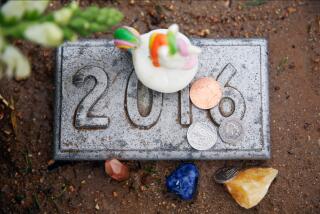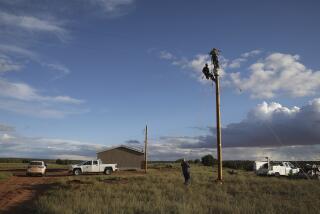Holiday Death Statistics: Bah, Humbug!
- Share via
CHICAGO — Death takes no holiday, according to a study published today that challenges the widely held notion that dying people can somehow hold on until after Christmas or important personal events.
Donn Young, a biostatistician at Ohio State University’s Comprehensive Cancer Center who studied data from more than 300,000 cancer patients, said the supposed phenomenon was mostly based on wishful thinking and selective memory.
“The mind does play a role in illness,” he said. “But the idea that death is something that an individual patient can control by sheer force of will -- just from looking at the data, this doesn’t appear to be so.”
Some doctors and nurses who work with gravely ill people are not convinced by the findings, arguing that the statistics do not tell the human side of the story.
Young and statistician Erinn Hade looked at Ohio death certificates for people who died of cancer from 1989 to 2000 and analyzed how many deaths occurred before and after three dates -- Christmas, Thanksgiving and the person’s birthday.
“If there was an effect, you’d see a dip before ... and an increase after,” Young said. But there was no dip and no significant difference in the proportion of patients who died before an event and those dying after.
“I can’t believe they’d put this out right before Christmas,” said Dr. Daniel Loiterstein, a specialist in geriatric psychiatry at Rush University Medical Center in Chicago. “It’s like walking around and telling people there’s no Santa Claus.”
Loiterstein said the study did not take into account individual situations and failed to consider that events other than holidays might be more important for some dying patients.
“We have all had the experience of watching a patient wanting to be there for their daughter’s wedding day, a grandfather wanting to be there for the grandson’s bar mitzvah or a Communion,” Loiterstein said. “I don’t think we should ever discount the power of hope and the power of these emotional events to move patients.”






